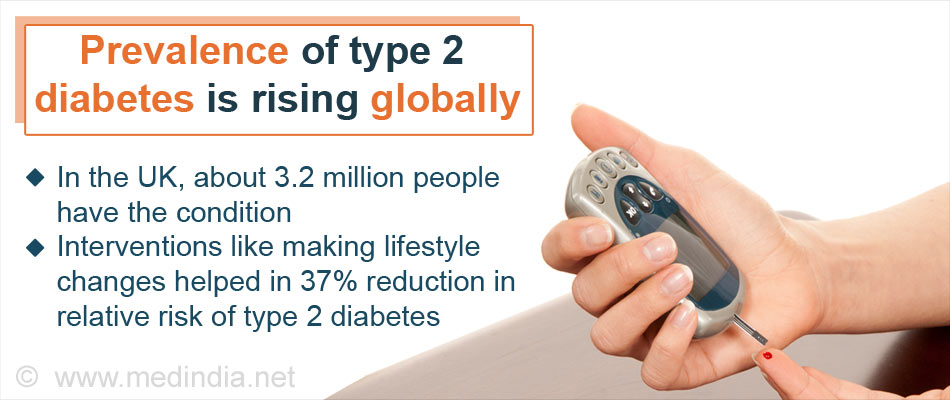
- The ‘screen and treat’ approach is a population-wide strategy that identifies people at high risk and offers individual intervention.
- This approach for tackling diabetes is not effective.
- This is because, the diagnostic accuracy of screening tests like fasting blood sugar and HbA1c is low, indicating that it might not benefit all.
For the screen and treat approach, the UK's National Diabetes Prevention Program follows Australia and the United States.
The screen and treat is a population-wide approach in which, people are identified as "high risk" and offered individual intervention. Every individual is targeted via public health policies.
This approach will only be effective if screening includes a test that accurately identifies those at high risk (sensitivity) and excludes those at low risk (specificity). An effective intervention that is acceptable to patients and clinicians should also exist.
Testing the Approach
Researchers assessed the diagnostic accuracy of screening tests like fasting plasma glucose and glycated haemoglobin or HbA1c, for pre-diabetes and effectiveness of interventions in preventing onset of type 2 diabetes in people with pre-diabetes.
They analyzed the results of 49 studies of screening tests and 50 intervention trials.
Screening tests included:
- fasting plasma glucose which indicates higher than normal blood sugar levels after a period of fasting
- raised glycated haemoglobin or HbA1c which measures the proportion of red blood cells with glucose attached, indicating blood glucose levels over the previous 2-3 months
- lifestyle change
- treatment with metformin- a drug that helps lower blood sugar levels
They found that for screening pre-diabetes, the diagnostic accuracy of tests used was low. The fasting glucose test was specific but not sensitive and HbA1c was neither sensitive nor specific.
This meant that many people will be unnecessarily treated or falsely reassured depending on the test used.
For interventions, making lifestyle changes that lasted 3-6 years showed a reduction of development of diabetes by 20%.
It helped with 37% reduction in relative risk of type 2 diabetes, which meant that 151 out of 1000 people developed diabetes compared with 239 of 1000 in the control group who developed diabetes.
Use of metformin showed a relative risk reduction of 26% while participants were taking this drug, translating to 218 out of 1000 developing diabetes while taking metformin compared with 295 of 1000 not receiving it.
Conclusion
The authors warn that of bias that may affect the study results.
They conclude that "screen and treat" policies will benefit some but not all people at high risk of developing diabetes.
In an accompanying editorial, Professor Norman Waugh from Warwick Medical School says adherence to lifestyle change across whole populations is the key to prevention of type 2 diabetes.
Professor Norman Waugh concludes that adherence to lifestyle advice remains poor, and concludes that preventing or delaying type 2 diabetes "requires effective measures to motivate the general population to protect their own health”.
The public health measures that targets the whole population at risk could include interventions to help weight control, such as changes to taxation of foodstuffs and interventions to make physical activity easier or safer.
The study is published by The BMJ.
Reference
- Trish Greenhalgh et al. Efficacy and effectiveness of screen and treat policies in prevention of type 2 diabetes: systematic review and meta-analysis of screening tests and interventions. The BMJ; (2017) doi: http://dx.doi.org/10.1136/bmj.i6538
Source-Medindia















